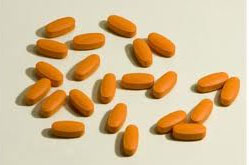Beta-alanine is one of the most popular supplements not just in the sport of bodybuilding but in a wide range of power and endurance sports. And rightly so; the supporting research on beta-alanine is overwhelmingly positive and exercise scientists’ are unanimous in their support of beta-alanine’s anaerobic exercise enhacing-capacity1. With regard to how beta-alanine works -it’s pretty simple really;
- Supplementation with beta-alanine increases muscle levels of carnosine, which is the body’s major intracellular buffer.
- Higher carnosine levels provide added buffer against acidosis during high-intensity exercise.
Beta-Alanine Loading
The beauty about beta-alanine is that muscle carnosine levels are highly responsive to its availability in the diet, even more so than creatine2. So unlike creatine, there are no special tricks with regard to loading.
Beta-Alanine Tingling
The only major catch with beta-alanine is its flushing/tingling side-effects. The reason being that beta-alanine also stimulates certain nerve receptors that lye just below the surface of the skin. This typically results in an irritation of the skin and/or prickly sensation starting 10-20 minutes after taking beta-alanine and lasting up to an hour3. However, there are ways to modulate supplementation so as to minimize these common side-effects, which will be covered below.
Beta-Alanine Supplementation
Because of its popularity, there is an abundance of information on the net about beta-alanine and its link with carnosine. So rather than rehash a whole bunch of information about how carnosine levels are regulated in the body and the effects of gender, age, muscle fibre type and training status etc; highlighted below are the key facts needed to maximize the benefits of beta-alanine for training and competition.
1. Carnosine Levels Keep Going Up But Come Down Slowly
Muscle levels of carnosine have been shown to keep increasing with up to 10 weeks of beta-alanine supplementation4. So beta-alanine is an ergogenic that should be taken for months as opposed to weeks to get maximum benefit. As an example, muscle carnosine levels can be increased by up to 80% after 10 weeks of beta-alanine supplementation4. This is quite a dramatic change. By contrast, creatine supplementation in doses of 20–30 g/day have shown to increase skeletal creatine content by about 20%5.Additionally, supplementation with beta-alanine is discontinued, muscle carnosine levels drop very slowly. In one study it took 15 weeks for muscle carnosine levels to drop back to normal, following a 55% increase after supplementation6. So users will still experience benefits from supplementing with beta-alanine several weeks after stopping.
2. Use Multiple Smaller Doses to Combat Tingling Side-Effects
Supplementation with 10mg/kg bodyweight of beta-alanine or more generally leads to symptoms of flushing; described variously as an irritation of the skin and prickly sensation3. This is a common deterring factor for supplementation. Taking multiple doses of 400mg or 800mg of beta-alanine daily has been shown to be equally effective for raising muscle carnosine levels as single doses of multi-gram amounts, while at the same time minimising tingling side-effects8. In addition, new slow-release forms of beta-alanine are now available, which significantly minimise the common side-effect of flushing/tingling.
3. Initial Muscle Carnosine Levels Don't Limit Benefits of Beta-Alanine Supplementation
Informed readers may be aware that genetics play a large role in an individuals natural muscle levels of carnosine, with sprinters and power athletes displaying higher levels9 than endurance athletes. Power athletes have a higher proportion of type II muscle fibers, which are naturally higher in carnosine. Despite this however, studies suggest that power and endurance athletes benefit equally from beta-alanine supplementation. This is because muscle carnosine levels are primarily determined by the total amount of beta-alanine ingested as opposed to pre-supplemental muscle carnosine levels8.
4. High Muscle Carnosine Levels are Important for Success in Bodybuilding
A study of the carnosine content of the quadriceps muscle of 6 UK national-level competitive bodybuilders found that they contained the highest ever recorded levels in human muscle7. This dispels the notion that beta-alanine supplementation is not important for bodybuilding. Conversely, it would appear that success in bodybuilding requires high muscle carnosine levels; wherein beta-alanine supplementation plays a pivotal role.
1 Derave W, Everaert I, Beeckman S, et al. Muscle carnitine metabsm and beta-alanine supplementation in relation to exercise and training. Sports Med. 2010;40(3):247-263.
2 Harris RC, Wise JA, Price KA, et al. Determinants of muscle carnitine content. Amino Acids. 2012 Feb 11. [Epub ahead of print]
3 Harris RC, Tallon MJ, Dunnett M, et al. The absorption of orally supplied beta-alanine and its effect on muscle carnosine synthesis in human vastus lateralis. Amino Acids. 2006;30(3):279-289.
4 Hill CA, Harris RC, Kim HJ, et al. Influence of beta-alanine supplementation on skeletal muscle carnosine concentrations and high intensity cycling capacity. Amino Acids. 2007;32(2):225-233.
5 Greenhaff PL, Bodin K, Soderlund K, Hultman E. Effect of oral creatine supplementation on skeletal muscle phosphocreatine resynthesis. Am J Physiol. 1994;266(5 Pt 1):E725-730.
6 Baguet A, Reyngoudt H, Pottier A, et al. Carnosine loading and washout in human skeletal muscles. J Appl Physiol. 2009;106(3):837-842.
7 Tallon MJ, Harris RC, Boobis LH, et al. The carnosine content of vastus lateralis is elevated in resistance-trained bodybuilders. Journal of Strength and Conditioning Research. 2005;19(4): 725–729.
8 Stellingwerff T, Decombaz J, Harris RC, Boesch C. Optimizing human in vivo dosing and delivery of β-alanine supplements for muscle carnosine synthesis. Amino Acids. 2012 Feb 23. [Epub ahead of print]
9 Baguet A, Everaert I, Hespel P, et al. A new method for non-invasive estimation of human muscle fiber type composition. PLoS One. 2011;6(7):e21956.

